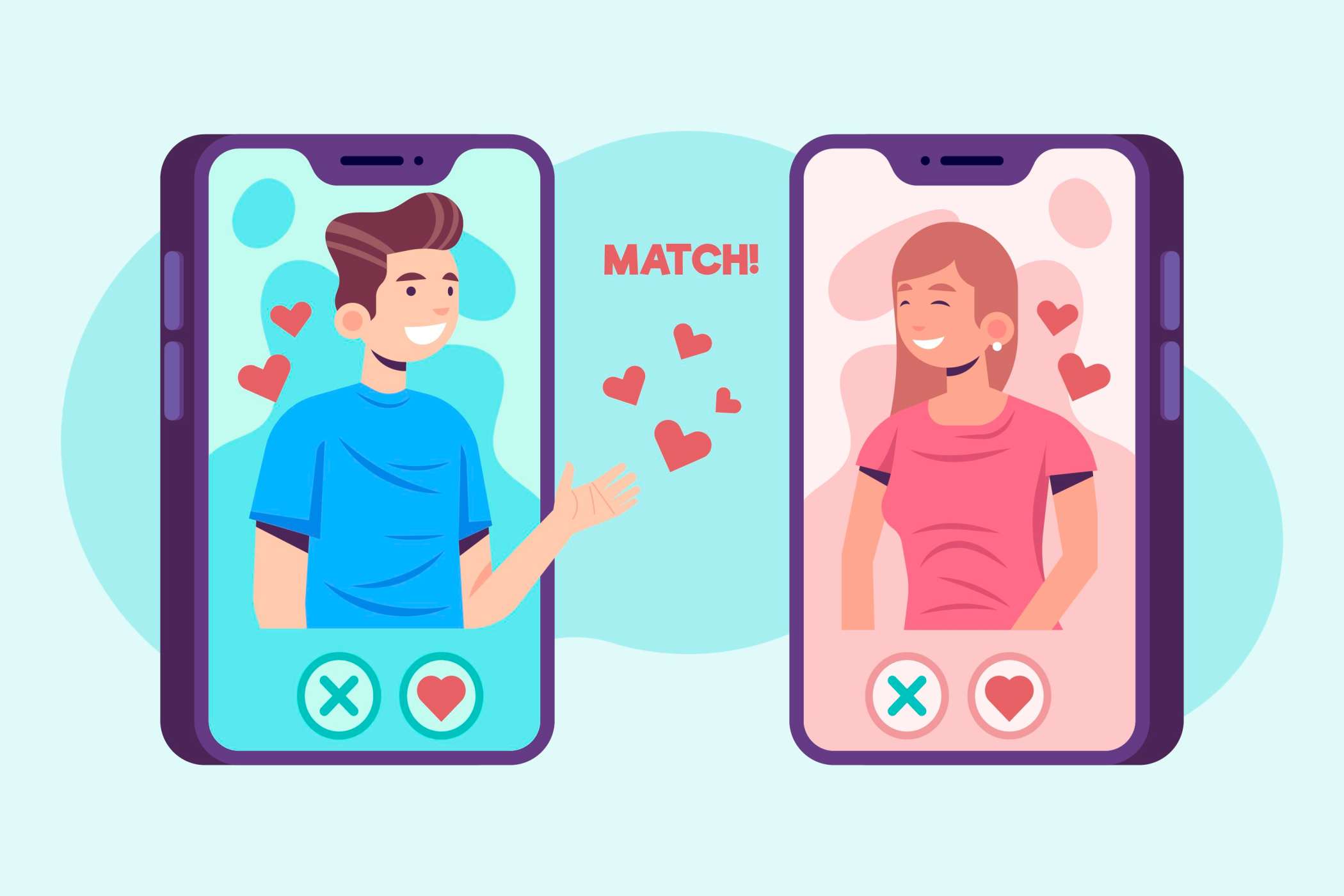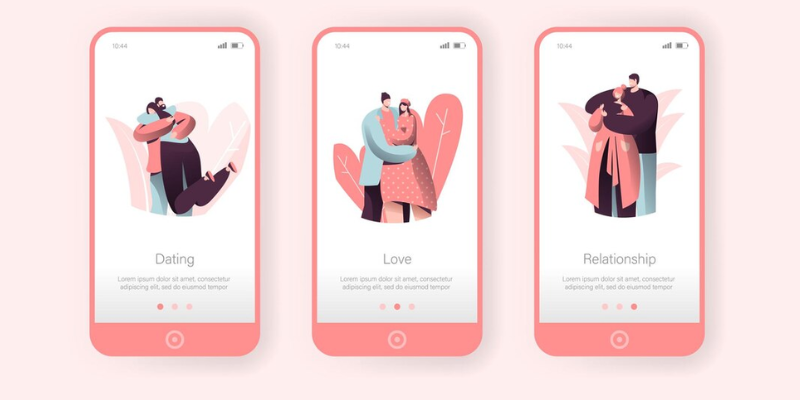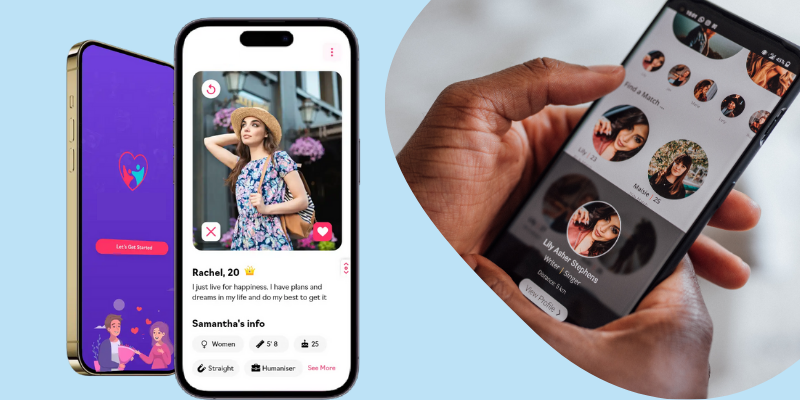The creation of a momentum-gaining online dating app is possibly one of the biggest hurdles you'll confront. It's very likely that your dating app will be able to compete with Tinder, but it's not required to. You can create a profitable dating app that is geared to a specific area, niche, or kind of user.
Features such as swiping and live messaging are only the beginning. Developers strive to create simple, user-friendly platforms. Privacy and security are essential to ensure users' safety when seeking affection. The difficulty is finding a balance between innovation and simplicity.
If you contact the developers, the most common response is a resounding yes. It depends on the partner's capabilities, technology stack, and area. To give you a rough idea, a simple social-media dating app takes more than 1200 hours. Depending on the geographic area, app type, and total time, the app's development costs could range from $25,000 to $125,000.
When you consider the cost, if you've got an idea for a dating app development in your head, this is the perfect moment to turn your concept into an actual realisation. A survey conducted by Grand View Research clearly indicates the huge market potential for dating apps.
Key Factors Affecting Dating App Development Cost
Apps for dating are getting increasingly well-known worldwide as smartphones become more widespread. Most online users use dating sites, creating an opportunity for market growth. An innovative business idea needs a substantial investment. The following elements affect the cost of developing a dating app.
App Type and Scale
In a competitive market, the goal of app development is to draw users in and generate revenue. So, the application must be distinctive and cater to an individual user segment. Matchmaking at the highest level is the primary objective of a dating app. Matching options are divided into four categories.
- Geolocation-based Matching App: Users can use their geolocation information to identify the closest matches.
- Algorithm-based match-making: User preferences and likes provide matches.
- Traditional Matching: The program uses a simple algorithm for dating.
- Niche Dating Niche Dating Allows users to join groups that share similar profiles. Incorporating gender-specific preferences can help prevent harassment.
You can develop applications like the ones below or incorporate different configurations to attract users. Because each feature is unique and requires a lot of development time, the cost of each feature will differ depending on the feature.
Features and Functions
Whatever the dating app's purpose, its basic features are required. The development cost of a basic app can be as low as $25,000. However, the application must be distinctive to stand out, which can cost more.
The price increases as the app features. Every dating app should have these characteristics:
- The app should verify the identities of users to prevent false profiles.
- Users can register for the app or log in via email and social media.
- The app and social media will let users sync their profile details and upload photos.
- Users should be able to communicate easily through chat.
- The app should be able to favor local matches by using GPS with the user's permission to ensure security.
These features are crucial to dating applications. Many other "good to have" features increase app user interaction and engagement.
Design of UI/UX
A visually appealing user interface (UI) effectively communicates the brand's image while providing users with an easy experience, which ultimately makes the app more successful. The price for developing apps can differ based on the testing methods used and the changes that must be made during the design phase of UI/UX.
In the case of a meeting app, the more appealing the user interface is, the more expensive it is usually. Selecting a pleasing design for the user interface (UI) layout is a good idea for anyone who wants to imitate popular dating applications because it can increase sign-ups and keep users engaged.
Maintenance and Updates
The complexity and size of your dating app will determine the maintenance and updates cost of developing dating app. These can cover server maintenance, bug patches, feature development, security updates, and more. Regular maintenance and updates are crucial to the app's success in addressing user requirements and market trends.
Types of Dating Apps
The world of online romance is huge, with dating apps for each category. From casual hookups to long-term relationships, there is a lot of variety.
These are the various kinds of apps for dating:
Questionnaire-Based
The apps that use questionnaires focus on the in-depth profiles of users to ensure more accurate matchmaking. They focus on compatibility and use extensive surveys to find potential partners. This strategy is appealing to those who are looking for lasting relationships.
Traditional
Traditional dating apps provide an easy, user-friendly interface for browsing profiles and sending messages. They are based on shared interests and physical attraction to help facilitate connections. With a huge user base, these apps are essential to the world of online dating.
Geolocation
Geolocation dating apps connect users by physical proximity, creating local connections. They use smartphones' GPS to help users find potential partners nearby, encouraging meetings in real-time. This kind of dating promotes spontaneity, using locations to connect users with common hangouts.
Niche-Based
Dating apps that cater to niches are designed to meet particular interests, beliefs, or demographics, helping to improve the ability to make targeted matches. They use a dating app business model that focuses on specific user groups and provides personalized experiences.
This feature attracts loyal users who are looking for like-minded companions. A good dating app fulfills the requirements of every user. Businesses must focus on exclusivity and user experience when selecting the model for dating apps.
Steps to Develop a Dating App
Before creating a dating application, you must be aware of the aspects that must be considered when creating an app that competes in the marketplace. Check out user feedback on popular dating apps and note any loopholes that impact the app's rating. This way, you can discover the most effective dating app, as people expect.
Let's take a look at the steps needed to create an app for dating:
Define the Target Audience
Before getting started on the development of your application, the first step is to determine whom the application is intended for. This will help you determine the most important features and design features that will draw the attention of your intended users. For instance, if your application is geared towards youngsters, it could feature a playful design and be more fun compared to the older segment of users. The app must be more serious and sophisticated than the younger group.
Conduct Market Research
The next aspect to consider is the market for dating apps and then analyze their competitors. This will give an idea of the features users would like to see in their app and the features currently available. Tools like Google Trends and App Annie should be used to determine the trends and competition in the market.
Plan and Design
Once you've completed your market research, you can begin designing and planning the app. You need to develop a thorough outline of the app's functions, user interface, and features. Consider the user flow, how users will use the app, and what data they must give. Partner with the top designers to design a pleasing and easy-to-use user interface.
Choose a Development Platform
After you've completed the concept and first actions, you must determine whether you'll develop an application native to a platform or cross-platform for users. The app will have the features you wish to have, such as the intended audience and the budget for its creation.
Build The App
Once the plan and design are established, it's time to build the application. This requires a highly qualified team of developers to develop the back and front end using programming languages like Python and Java. The user interface depends on the front end, while the back end handles the application's data and logic. The application.
Test and Debug
After the app has been created, it is crucial to verify and correct any technical or bug problems that arise in the app. You must also ensure that your app works across different operating systems to ensure that it functions properly on all required platforms.
Launch and Market the App
After all the application's steps are complete, it's time to showcase the dating app to users. The app can be launched through a variety of methods, including first launching it on the Play Store to gain access. Marketing can be carried out through multiple channels, including Facebook, social media marketing via influencers, and search engine optimization. Offering incentives to draw users in and offering free trial programs are great options.
Maintain and Improve the App
After you have launched the application, it's time to make updates. You must be informed about new features, read customer feedback, and then begin working to improve it and keep users engaged. At times, improvements and maintenance can ensure that the app is attractive and useful to users.
Strategies to Monetize the Dating App
Monetizing a dating app requires thoughtful planning and innovative strategies. Many choices include subscriptions, in-app purchases, and even memberships.
Here are the ways to profit from the app for dating:
Premium Subscriptions
Premium subscriptions give users access to exclusive features that enhance the user experience. This model generates revenue by offering value-added services, such as unlimited swipes and advanced matching capabilities. It also encourages users to invest in the application.
Ads
Incorporating advertisements into a dating app will provide steady income without affecting the user experience. By displaying relevant and non-intrusive ads, the app will generate income while ensuring that the core features remain completely free.
This approach balances monetization and user satisfaction, ensuring the app's design remains appealing and highly competitive.
In-app Purchases
Users can purchase in-app features such as boosters and super likes to gain access to additional features. This monetization strategy increases the user's engagement by offering choices for more engagement and visibility. It increases revenue directly, attracting motivated users.
Partnerships and Collaboration
Partnerships and collaborations can open revenue opportunities that go beyond traditional ways of earning money. For example, by partnering with businesses and other events, the app can provide exclusive, special discounts to its users. This approach diversifies revenue sources, which increases the app's value.
Selecting the best monetization strategy is vital to the success of. It balances revenue-generating with the user experience. It is recommended that you hire a dating app business that can assist you in selecting the best method to make money.
The Key Takeaway
In a growing number of cases, people are searching for romance using the most advanced technologies and then turning to online dating using smartphones. Although increasing competition in the dating app market is fierce, there are numerous opportunities to grab. With a variety of mobile apps to suit every taste, it is essential to discover distinctive features that can serve your business as a distinct advantage.
The aim is to develop a dating app that can provide value to users, meet their demands, and offer them new advantages. This can help your dating application become a game changer.
If you have an app idea, you can test it with a reputable dating app development company. Our team's vast experience has assisted many businesses in developing effective and enjoyable dating apps.






